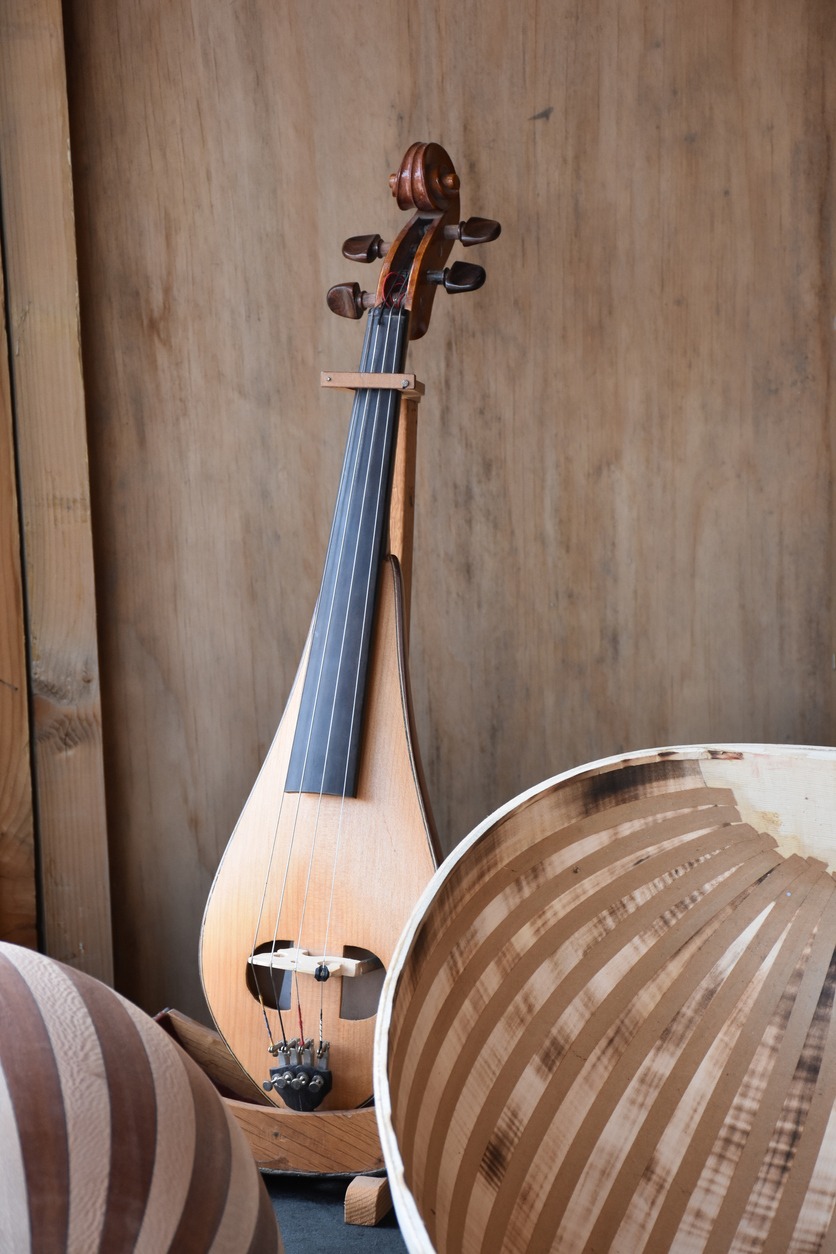The kemenche or kamancheh is a bottle-shaped instrument that came from the north-eastern Asia Minor bordering the Black Sea. This stringed instrument has a substantial symbolic value and cultural identity for the Pontic Greeks. The name of this instrument came from a Persian origin that means “little bow” or “small bow.” As well as that, thekemenche is sometimes called the Pondiaki Lyra, the Greek for Pontic Lyra, and Karadeniz kemechesi, Turkish for Black Sea fiddle.
Traditionally, the kemenche is made out of cherry, plum walnut, or mulberry wood. Afterward, it is carved in the shape of a trough that has a rounded end. This instrument’s short neck has a fingerboard, tapers to a pear-shaped pegbox. It also as three strings that are played with a short horsehair bow. These strings that are attached to the fingerboard were tuned in 4ths and played in two-part polyphony or bowing across two strings at once.
Interestingly, the kemenche’s strings were made on silk back in the 1900s. However, the silk strings produce a beautiful yet weak sound. After the silk strings, it was subsequently replaced by metal strings. The sound of this instrument is recognizable and sharp. It can also be played whether the player is sitting, standing, or actively leading a horon or chain dance, with the tailpiece that is directed away from the player’s body. Back then, this instrument was played by placing the wrist through a loop made of a ribbon, which was tied to the fiddle’s head. This helps the player stabilize the kemenche when they played the notes of the upper register with the extension of the fourth finger.
Much like other instruments that come in various sizes, the kemenche has two classes differing in size. The smaller kemenche is around 54 centimeters long and has a fingerboard. Meanwhile, the more extensive kemenche measures about 68 centimeters in length. A similar instrument called kemane of the Cappadocia is somewhat identical to the larger kemenche, although it has six strings with further sympathetic strings under its fingerboards. In contrast, some Greek kemane players like George Poulantzaklis argues that the kemane measure 55 centimeters to 77 centimeters, which is larger in shape and volume in comparison to the larger kemenche.
Moreover, kemenche is one of the basic types of Lyra. The other three were the Lyra of Dodekanisa, the Cretan Lyra, and the Thrakian Lyra. The Thrakian and Dodekanisa Lyra are both pear-shaped with about three to four gut or metal strings. Its strings were stopped from the side by the fingernails. It differs from the kemenche since the kemenche’s strings were stopped by fingertips using the four fingers of the left hand. This gives expressiveness to the colorful playing of the Lyra. In order to produce pitches that are highest than the open strings, the strings are needed to be pressed firmly against the fingerboard. Thus, shortening the length of the sound and consequently raising the pitch.
The kemenche strings are tuned to the highest tune. With that, Turkish fiddlers choose a pitch at which their instrument is more resonant.In addition, the pear-shaped Lyra were once common until World War II but are now rare. This pear-shaped Lyra is also closely related to the medieval rebec, which was a precursor of the fiddle. Additionally, the earliest known instrument and also the parent of this medieval rebec is the rabab.
Although the history of the kemenche was obscure, the earliest representation of this instrument appears in Amadeo Preziosi’s album, the ‘Watercolors of Istanbul.”From the 1840s onwards, Preziosi was active in Istanbul and was the chief figure in the Turkish art world in the year 1870. However, it is also important to note that the lack of images of humans and artifacts in Islamic countries at that time hinders the dating of the kemenche instrument to an earlier period. Furthermore, researchers and some notably respected kemenche players believe that the instrument, which they preferably call the Pontic Lyra, has its roots in Medieval European instrument, rather than an instrument originated in Asia. The kemenche was taken to Greece in the 20th century by Pontic Greek refugees. Prior to that, it was also taken to the Caucasus in the last half of the 19th century.

